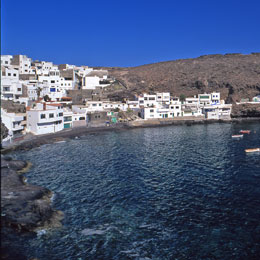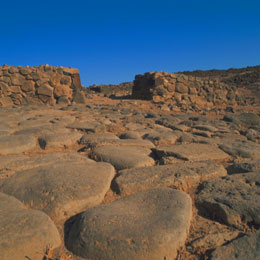This beach is considered a cove, and stretches out for some 40 metres. It is south facing and is sheltered from the prevailing winds thanks to the rocky headland called Morro de Tufia (or the Tufia Peninsula). It has some very attractive sea beds for diving enthusiasts.
“The name Tufia itself oozes the essence of a bygone age. The aboriginal guaire settlement Taufia remains intact to this day, stone upon stone, with no mortar. Its crowns a small cliff peninsula with hollows hanging precariously from it, which are still used as houses. Visitors soon become aware that their visit to this fascinating arquaeological settlement is about to become an exciting cultural adventure”. This is how this emblematic spot is described by Telde writer and naturalist José Luis González Ruano in his book El Bosque de Tara (1995).


Due to the unique characteristics of Tufia, there are a number of protection orders that converge on this region, such as the Special Preservation Area (ZEC in Spanish), Site of Scientific Interest and Coastal Bird Protection Area. Likewise, the arquaeological area was declared a Historic-Artistic Monument on 5th July 1973, moving up to the category of Site of Cultural Interest (BIC in Spanish) via Law 16/1985, by the Historic Heritage.
For an accurate picture of the sandy area of Tufia, we need look no further than Telde naturalist writer José Manuel Espiño Meilán. In his book Sendero ecológico por los arenales de Tufia (1987) he describes the sands as “nearly extinct fossils, which can be found some 30 metres above sea level, due to the shrinkage caused by the last erosive period which also resulted in the raising up of the island. We can observe cross-layering, typical of the sandy deposits formed by the wind, in the fossil dunes preserved there, next to an export packaging warehouse for local farm produce, with an irrigation pond serving existing agricultural activity in the region”.
Text: Álvaro Monzón (environmental writer)
